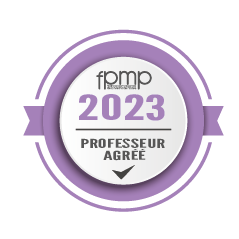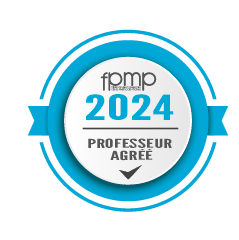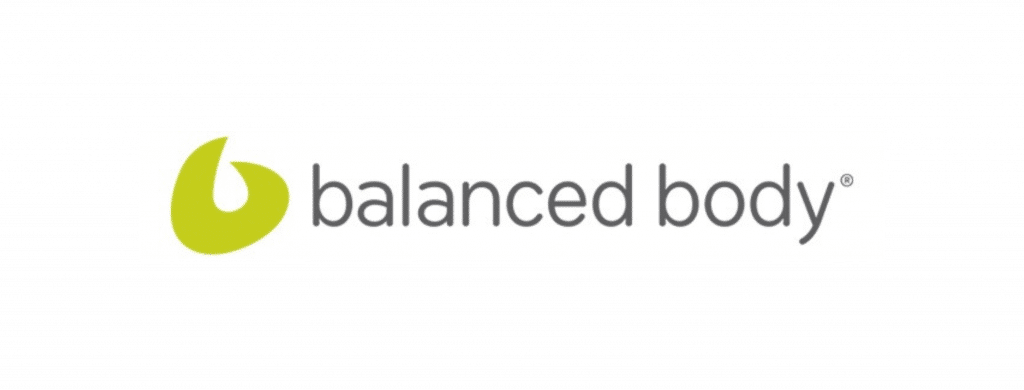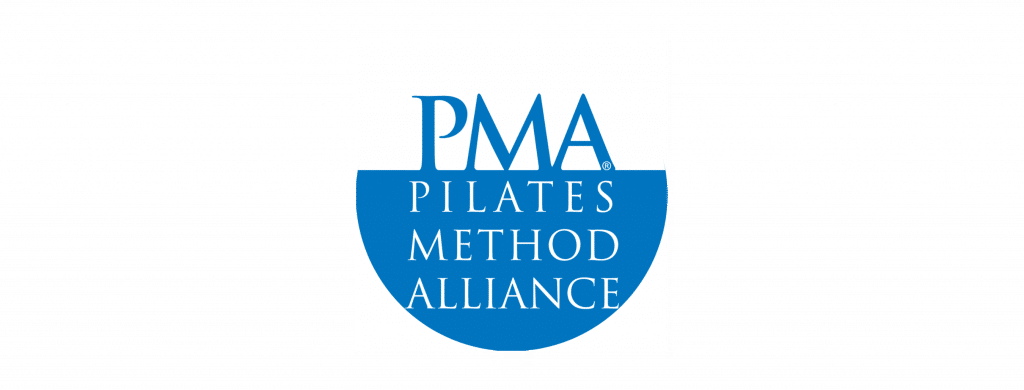Who can do Pilates ?
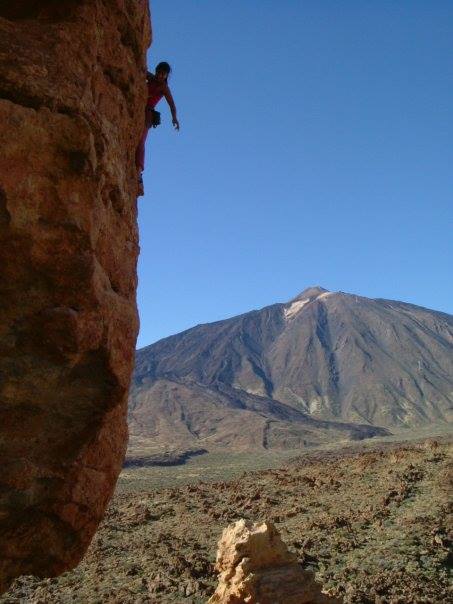
Everyone!
Everyone can practice Pilates because the exercises, although demanding, are neither violent nor traumatic for the body. It is recommended for people who are not very athletic, for those who suffer from stress, fatigue, stiffness, for expectant mothers or those who have just given birth, for the elderly, for people who are injured or even recovering. For mothers-to-be or frail people, a doctor’s supervision is nevertheless essential. And above all, for high level sportspersons (level 3) where the sequences will be an excellent exercise to considerably improve their endurance, strength, flexibility, coordination and breathing.
Welcome to all the great sports players!
“It’s the mind itself which shapes the body.”
Joseph Pilates
Prenatal Pilates
The Pilates method is ideal for expectant mothers
This course, taught by Nadège, shows how the posture-respiratory approach is applied, the A.P.O.R Gasquet method at the time of birth. The de Gasquet method, which we adapt in this class to that of Pilates, allows women to look for pain-relieving positions which allow relaxation, free breathing, mobility of the pelvis and the best adaptation of the latter to the position of the baby at each stage, in order to facilitate its progression with less resistance.
You will discover different postures and you will familiarise yourself with the birth room, so that you are ready on D-day and experience a more physiological birth, more gently, even in the case of medicalisation, by managing pain and stress as well as possible. Your partner will also learn how to help and support you more effectively.
Breathe to relax and oxygenate the baby
Adopt the right postures: sitting, standing, squatting, crawling and lying down
Mobilising your perineum to prepare it for the ordeal and the after-effects
Managing pain during labour
Finding your position on the delivery table
“Push” differently to give birth to your child while protecting your perineum
Being an active participant in your birth
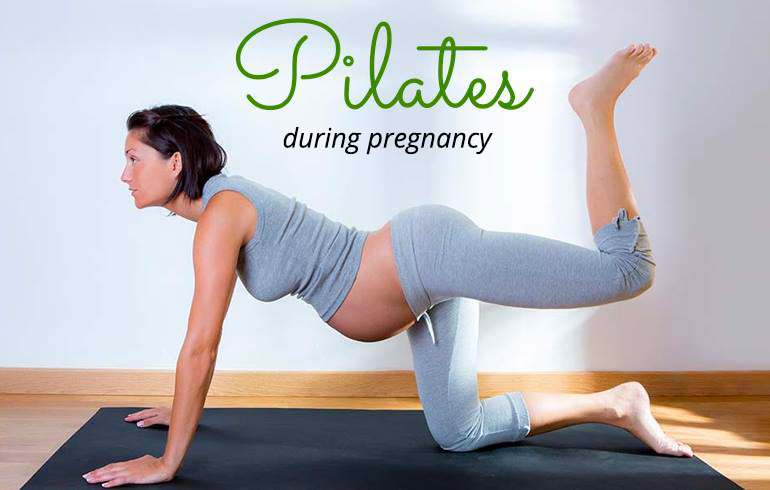
Can I do Pilates if I am pregnant?
Absolutely, because Pilates is ideal for expectant mothers. This gentle technique allows you to become more aware of your body and to better control your posture and movements. It is based on strengthening the power house, i.e. all the muscles in the centre of the body (abdominal muscles, pelvic floor and back muscles).
These are deep muscles, the ones that support our skeleton. The exercises, which are carried out on the floor, also allow the flexibility of those motor muscles that need it. This is why regular practice of Pilates makes daily life easier for everyone, not only for expectant mothers.
For expectant mothers, a medical certificate of no contraindication to the practice of Pilates and yoga is required for each quarter.
These are deep muscles, the ones that support our skeleton. The exercises, which are carried out on the floor, also allow the flexibility of those motor muscles that need it. This is why regular practice of Pilates makes daily life easier for everyone, not only for expectant mothers.
For expectant mothers, a medical certificate of no contraindication to the practice of Pilates and yoga is required for each quarter.
Why is it good for me ?
Pilates are particularly interesting for expectant mothers. As the baby grows in the warmth of the mother’s womb, the centre of gravity of the mother moves forward. This tendency heightens as the months go by and leads to an increase in the lumbar curve, the hollow of the lower back. Pilates strengthens the transverse abdominis, the deepest muscle of the abdominal belt. It is stronger and acts as a support sheath. This helps to limit tension in the lumbar region and the stomach feels lighter. The back muscles are stronger and the spine is straighter.
The baby’s weight increases over the 9 months of pregnancy and so does the pressure on the pelvic floor! Thanks to Pilates, the pelvic floor becomes stronger and the perineum more resistant. This helps to limit the risk of incontinence at the end of pregnancy and facilitates recovery after childbirth.
Can I practice in the same way while I'm pregnant as when I'm not?
If there are no concerns with your pregnancy during the first quarterly period (no high blood pressure, no bleeding), there is no need to worry. Just remember to enjoy it without pushing yourself. If you feel tired, listen to yourself and slow down!
From the second quarterly period onwards, as the belly becomes more defined, some adjustments are necessary. In general, Pilates is practiced on the floor, lying down. As soon as your belly becomes rounder, you should use a cushion to position yourself on an inclined surface. This will raise your upper chest above your pelvis, because when you lie on your back, the baby presses on the vena cava, which can deprive it of oxygen. Many exercises can also be carried out by comfortably sitting on a large ball.
It is important to remember to often change position in order to facilitate blood circulation, which is more difficult when you are pregnant.
To prepare for childbirth, your body produces a hormone called relaxin which makes your tendons more flexible. You have to be more careful because your joints become less stable. This is why your range of motion should be limited.
Finally, exercises in which the chest is raised should be avoided. You should keep your head down, because the white line of your abdominal muscles, which is gradually opening up, could relax even more quickly.
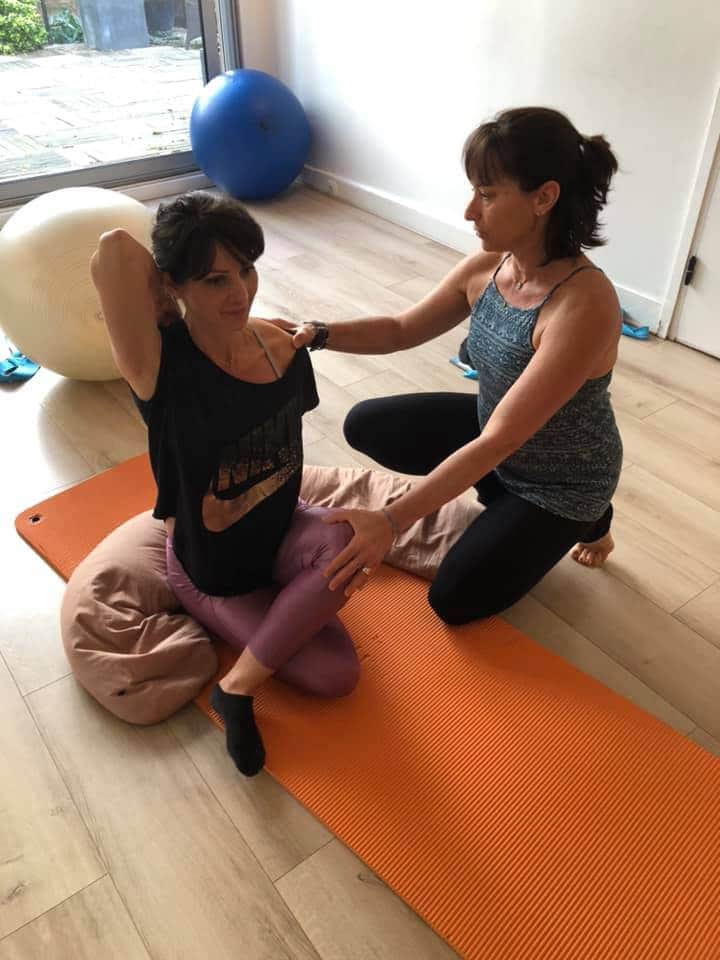
It is important to remember to often change position in order to facilitate blood circulation, which is more difficult when you are pregnant.
To prepare for childbirth, your body produces a hormone called relaxin which makes your tendons more flexible. You have to be more careful because your joints become less stable. This is why your range of motion should be limited.
Finally, exercises in which the chest is raised should be avoided. You should keep your head down, because the white line of your abdominal muscles, which is gradually opening up, could relax even more quickly.
Why can't I do only Pilates ?
Pilates is a perfect complement to other activities that are recommended, such as walking or swimming. It will give you good posture and make your muscles stronger. This will make the movements you make more effective.
Where can I do Pilates ?
Choose a special Pilates class for expectant mothers, just like the one we offer at Studio Nai’A. In doing so you will ensure that you will only do the right exercises.
Individual classes are a great way to practice. Your coach will offer you sessions especially designed for you and your specific requirements.
Postnatal Pilates
Known for its benefits during pregnancy, Pilates is also ideal after childbirth to regain your figure, thanks to its work on flexibility and muscle tone. it is also a discipline that brings a lot of emotional benefits, which can be a true blessing to young mothers…
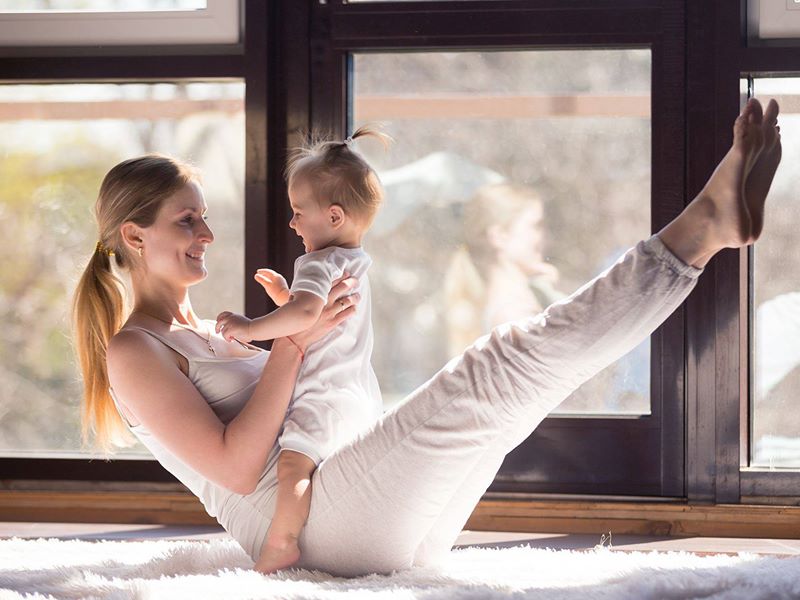
When can I start Pilates after childbirth?
Before anything else, you need to be aware that you should not rush back into physical activity. Childbirth is an event that weakens the body, not to mention the fact that being the mother of a newborn baby is tiring even with the calmest of babies !
Therefore, ideally you need to ask your doctor’s advice. The doctor will most certainly tell you to wait between two to three months after giving birth before starting Pilates and longer in the case of a caesarean delivery. However, after 2 to 3 weeks you can start with the special POSTNATAL classes in order to safely redevelop the perineum. Nadege has being trained by the Bernadette de Gasquet APOR method. This method offers special classes that take into account the physiology of expectant mothers during and after pregnancy.
Therefore, ideally you need to ask your doctor’s advice. The doctor will most certainly tell you to wait between two to three months after giving birth before starting Pilates and longer in the case of a caesarean delivery. However, after 2 to 3 weeks you can start with the special POSTNATAL classes in order to safely redevelop the perineum. Nadege has being trained by the Bernadette de Gasquet APOR method. This method offers special classes that take into account the physiology of expectant mothers during and after pregnancy.
Rapidly regain your figure.
Pilates is becoming more and more popular among young mothers because it places special emphasis on the muscles that suffer the most during pregnancy, namely the transversus abdominis, the back muscles, the gluteus maximus and, of course, the perineum.
As the baby grows in utero, the mother has to support an ever-increasing weight, which puts a particular strain on the back muscles as the abdominal belt relaxes under the rounded belly and while in turn the perineum relaxes.
Pilates after childbirth allows you to work in depth on these areas in order to correct your posture, reshape your body, and to regain your figure within a few months. Some women are even surprised to find that Pilates gives them a slimmer figure than before their pregnancy!
A mind of steel!
While Pilates is extremely beneficial to a young mother’s body, it also has a surprising effect on the mind. This method allows you to become aware of your body thanks to breathing exercises that lead to a state of relaxation thus influencing the quality of your life.
New mothers learn to accept their changed bodies and are able to peacefully work on them. The psychological tensions accumulated during pregnancy and childbirth are thus released and motherhood-related emotions are fully controlled.
Women who practice Pilates after the birth of their baby report a better quality of sleep and reduced tiredness. This greatly reduces the risk of post-natal depression, commonly known as the baby blues.
Finally, at Studio Nai’A we also welcome babies in our POSTNATAL classes so that mums can take care of themselves without having to find a childminder!
Pilates for seniors
Over time, there is an increasing need to maintain mobility, strength, flexibility, range of motion and balance.
The use of Pilates for seniors is becoming more and more common. Of all the existing programs in this field, none compares to its originality, nor to its effectiveness. This is why doctors, physiotherapists and osteopaths recommend Pilates to seniors as a regular background treatment.
Exercises truely adapted to seniors
It is a method very well adapted to the particular needs of seniors. It offers, through safe and effective exercises, a pleasant, stimulating and beneficial way to get back into shape. It relieves age-related ailments such as back pain, joint pain, osteoporosis, and respects their limitations, etc., also helping to improve both strength and mobility of the spine, helping to regain a better posture, resulting in a more secure balance.
Here are some specific cases where Pilates is effective: herniated discs, sciatica, osteoporosis, menopausal discomfort, rehabilitation after surgery (thighbone, hip replacement, etc).
As they age, seniors need to maintain their mobility, balance and flexibility. Regular practice of Pilates can help towards this.
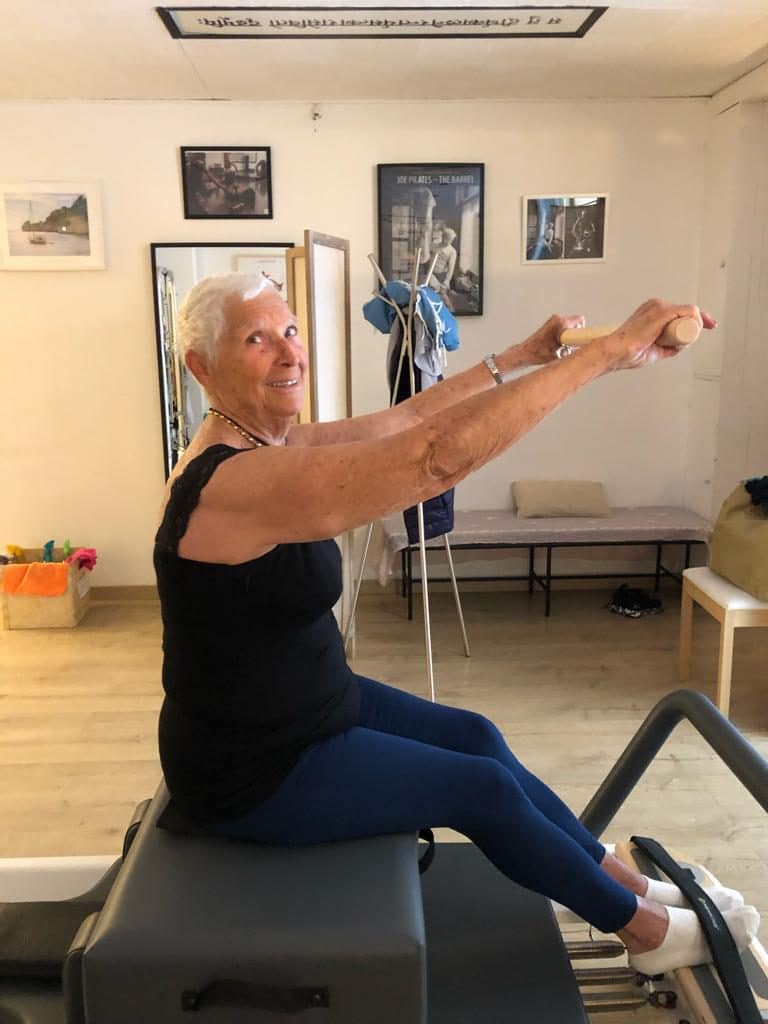
The Pilates method allows you to perform movements gently and without force. Seniors can work on muscle tone, balance and improve posture. Pilates classes must be done with a qualified instructor. Nadège has been trained to safely accommodate seniors.
Indeed, as the elderly have a greater tendency to fall and injure themselves, this can cause back and joint blockages. The presence of our professional instructor will ensure that the senior’s movements are carried out properly, to catch a fall or to avoid any risk of injury.
Pilates for children
« Hold yourself properly, sit up straight, stop slouching in your chair… »
These are just but a few phrases children often hear. The Pilates method pays particular attention to the back and, in particular, will help to improve the tone and prepare the back of children.
It allows them to learn to stand better, to correct bad postures and that from the age of 12 years.
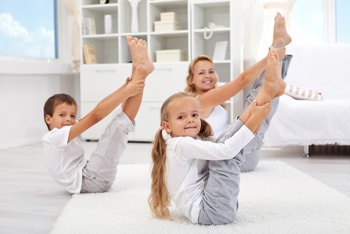
The child will first become aware of his posture in order to acquire the right reflexes to improve the exercises. The exercises are fun and easy to do. Depending on the age of the child, it is possible to correct bad habits and relieve or even eliminate a simple backache. From the age of 6, the exercises are essentially based on postural balance. For their age, they have large muscles and their abs are very deep. The session can be carried out with or without a parent present.
It is well to keep in mind that Pilates is an appropriate activity for children. This is due to the exercises being carried out gently and allowing for the progressive mobilization of different parts of the body. This contributes to the physical and mental development of the child. The classes take place on the floor (Matwork) with or without small equipment, such as balls, elastics or rollers. These are used to diversify the sessions making them fun and playful.
Fun and easy to do, Pilates classes help children relax, tone their muscles, improve coordination and concentration.
In the case of scoliosis in a child, it is preferable to choose individual sessions, which allow for in-depth work on the tension points. This method favours a harmonious development of the body. At the end of each session, specific recommendations on certain postures are given to the child.
Pilates for men
Pilates is also for men!
The Pilates method is not a method of bodybuilding but a postural rebalancing. We work from the bone structure of the body calling upon the deep muscles attached to the joints. This is achieved through concentration, breathing and other principles of the method. The goal is a better distribution of the muscular forces due to dynamic balanced work.
We work on “economy and comfort”, which builds long, firm muscles. This, by no means stands for untoned and boring. Stretching is part of my sessions, and both men and women can practice Pilates. It is clear that this field of physical training is now dominated by a majority of women, both as instructors and students. Potential male clients have reservations when they see that advertisements, videos and blogs for Pilates feature almost exclusively women.
This is why men seem to shy away from this method, although we are currently seeing a shift in male beliefs. A man does not have to be flexible or particularly strong to start a Pilates programme.
Day to day movement uses certain muscles more than others. When starting Pilates, the neglected muscles are given special attention. In general, men need to work on their flexibility more than their strength. Gaining flexibility prevents injury and increases range of motion.
To maximize the results of training, it is important to work on the deep muscles, keeping the spine and body lengthened and learning to breathe properly and allow the body to release unnecessary tension.
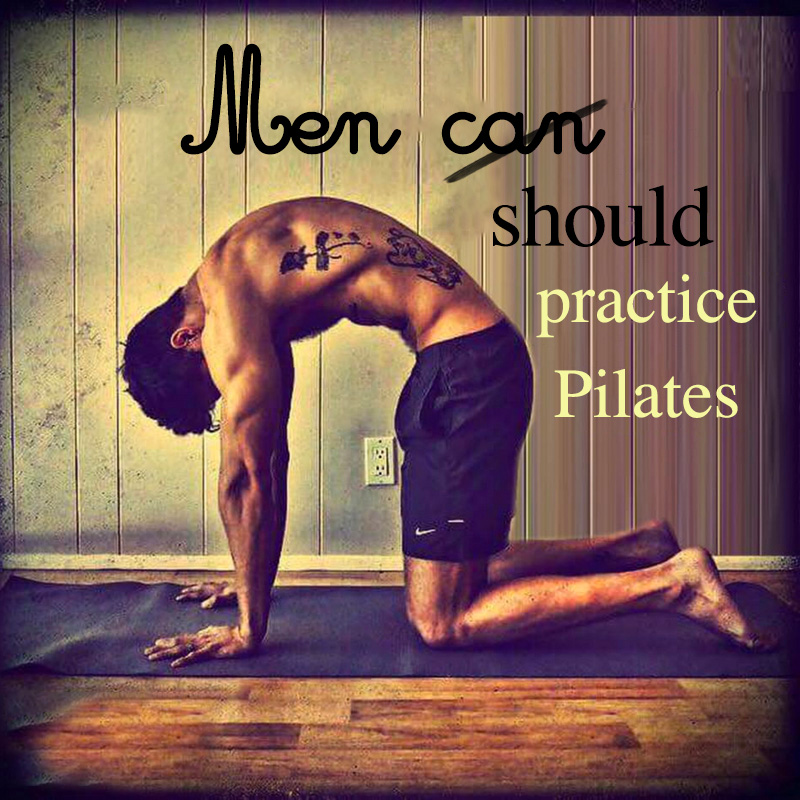
Day to day movement uses certain muscles more than others. When starting Pilates, the neglected muscles are given special attention. In general, men need to work on their flexibility more than their strength. Gaining flexibility prevents injury and increases range of motion.
To maximize the results of training, it is important to work on the deep muscles, keeping the spine and body lengthened and learning to breathe properly and allow the body to release unnecessary tension.
Pilates for atheletes
Pilates is not only used to perform simple movements, but also to give an extra challenge to people with a high level of sport, as well as for any special individual needs for footballers, tennis players, golfers, professional dancers, marathon runners, swimmers, climbers, snorkelers, to name but a few. It is also for asymmetrical musicians such as violinists.
Pilates is very useful for people with a particular pathology or problem, or who need physical therapy after an injury or accident.
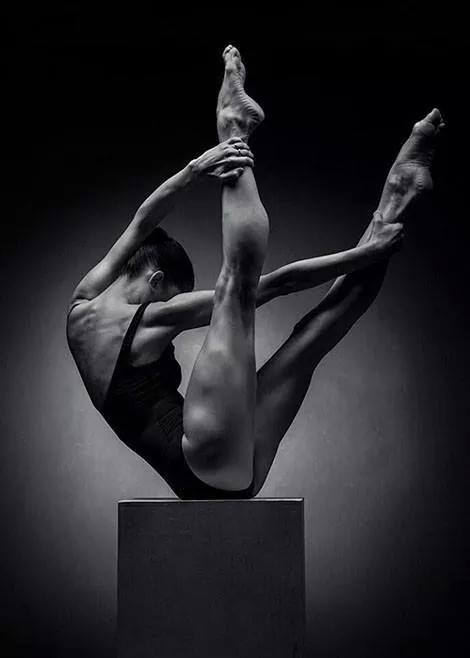
The Pilates Method is a remarkable tool that allows you to considerably improve your strength, flexibility, tone and control of your body. It allows you to become aware of the importance of a good posture based on a deep musculature correctly worked on, and thus, carrying balance. It makes all the muscle chains work in a uniform way avoiding the imbalances caused by intense sports activities which require the repetition of movement.
Our Pilates classes in Marseille for athletes allow for:
• Lightening the weight of the body on the lower limbs
• Improving muscular coordination and synergy
• Better breathing and body control
• Posture optimization and body alignment
• Preventing risk of injury
Pilates provides athletes with the means to improve the effectiveness of their workouts by strengthening their core muscles, preventing injury or negative tension, and improving their posture.
Pilates has positive effects on maintaining posture. Pilates classes not only increase spinal mobility, but also make the spine more flexible and develop the back muscles, as well as reposition the centre of gravity by strengthening the muscular balance to meet the needs and physical condition of each athlete.
In order to better prepare you for a sports competition, contact us at Studio Nai’A, your Pilates specialist in Marseille. We also offers physical preparation sessions designed to achieve global strengthening and flexibility of the body.
Some names of world famous athletes who practice Pilates:
Tennis: Andy Murray, Venus Williams
Cycling: Victoria Pendleton
Swimming: Dana Vollmer, Missy Franklin, Haley Anderson
Diving: David Boudia
Volleyball: Kerry Walsh-Jennings
Golf: Tiger Woods, Annika Sorenstam, Rich Beam
Wrestling: Jordon Burroughs
American soccer: Calvin Johnson, Nate Burleson, Brandin Cooks
Artist: Zabou, Madona, Sylvester Stallone, Sting…
All professional dancers and athletes do Pilates.
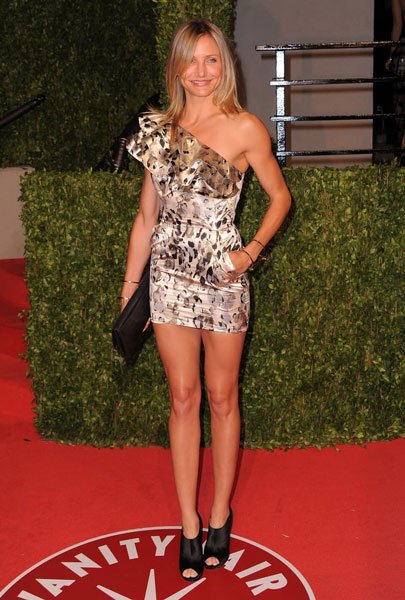
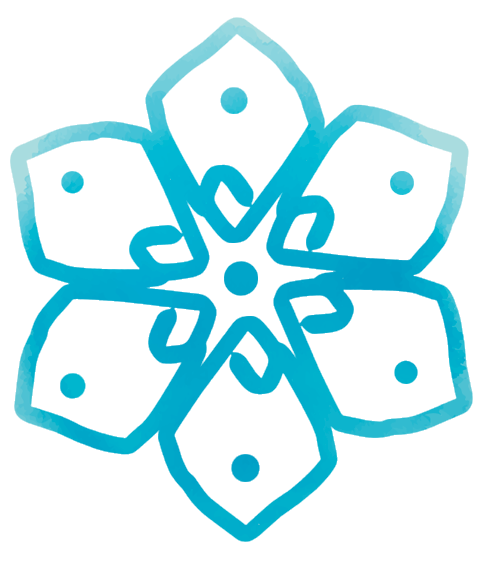
Studio Nai'A
20, rue César Aleman
13007 Marseille
Tel: +33 7 83 77 68 43
Follow us:
© Studio Nai’A | Design by graphika.fr | Notice Legales

